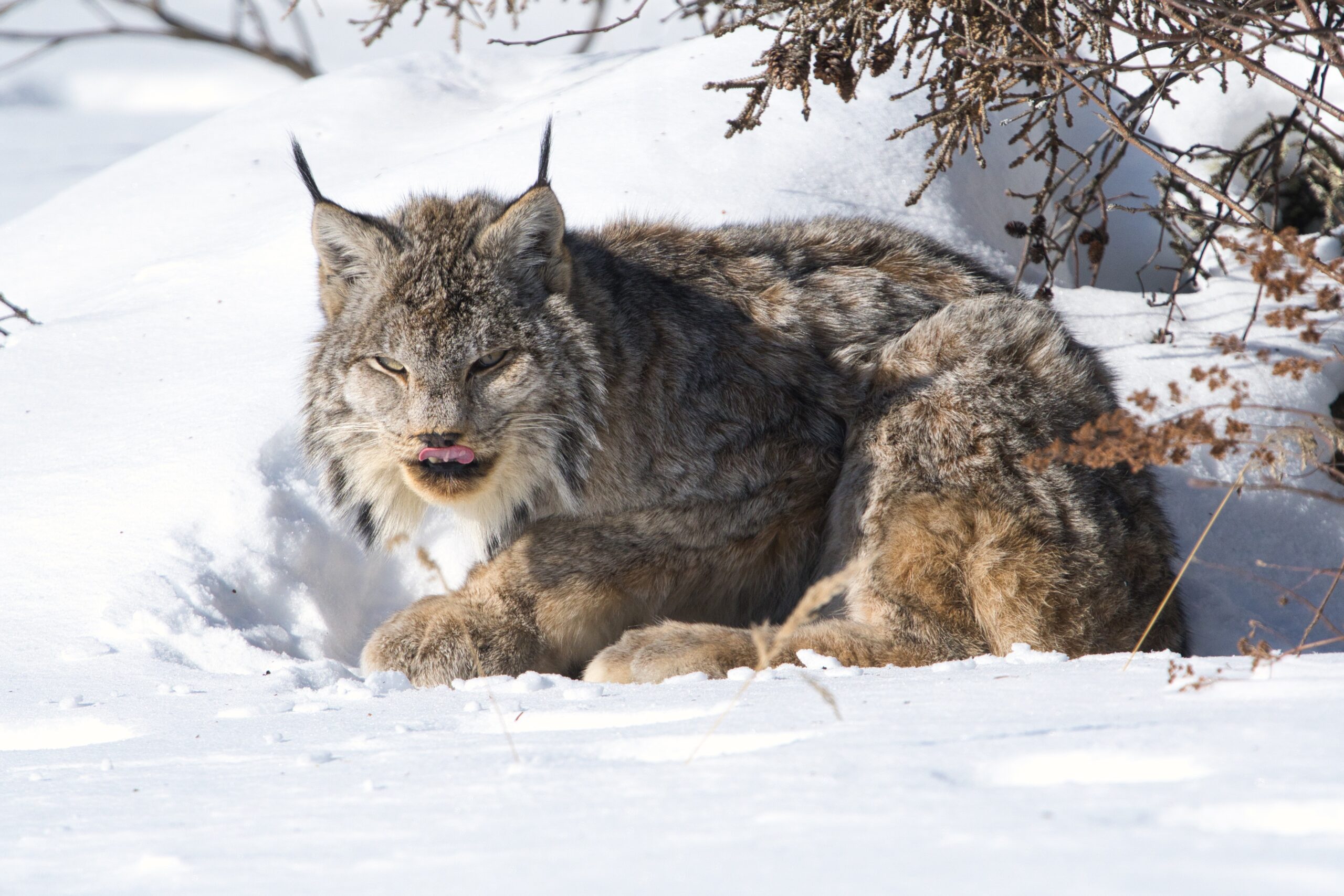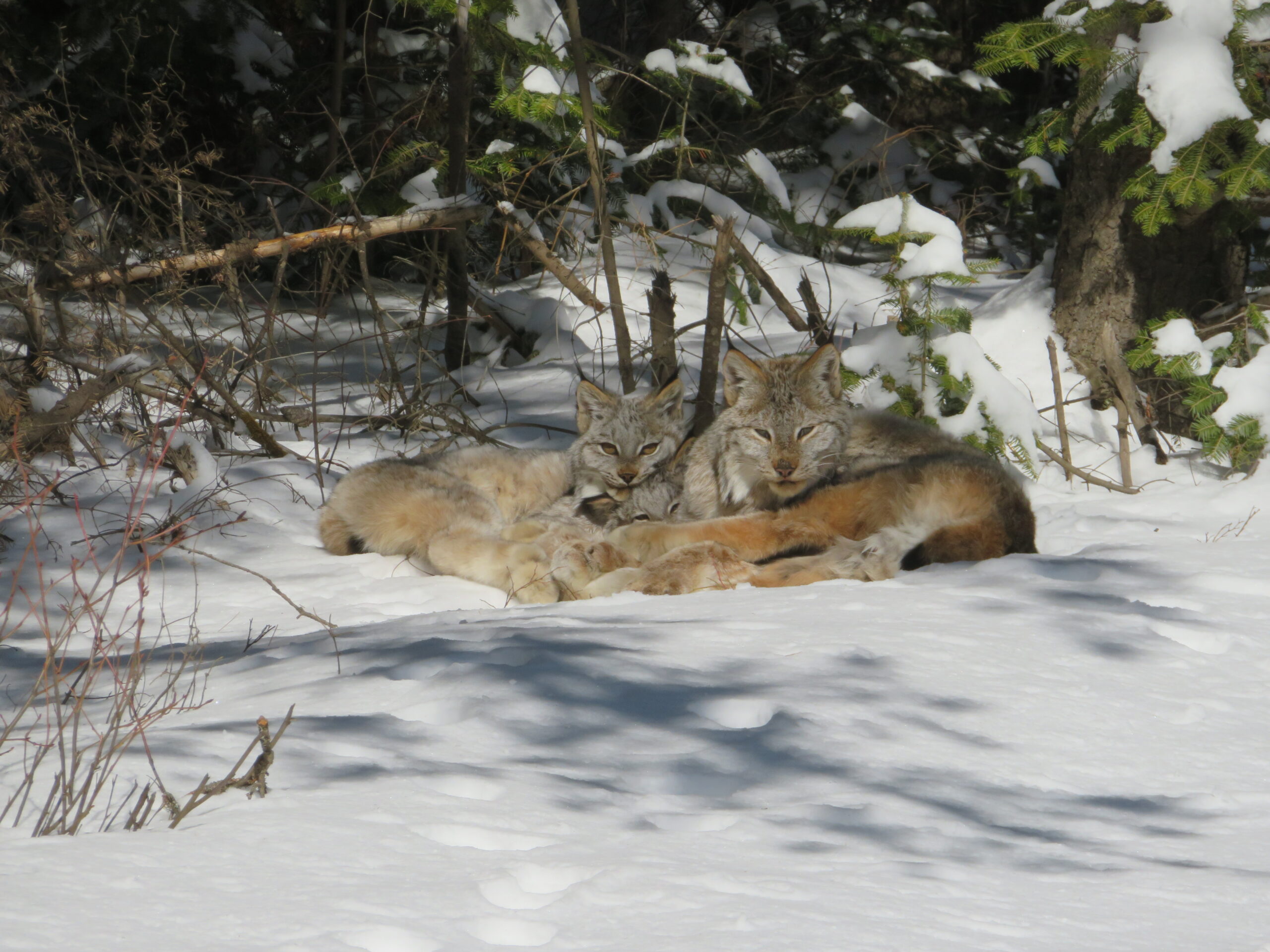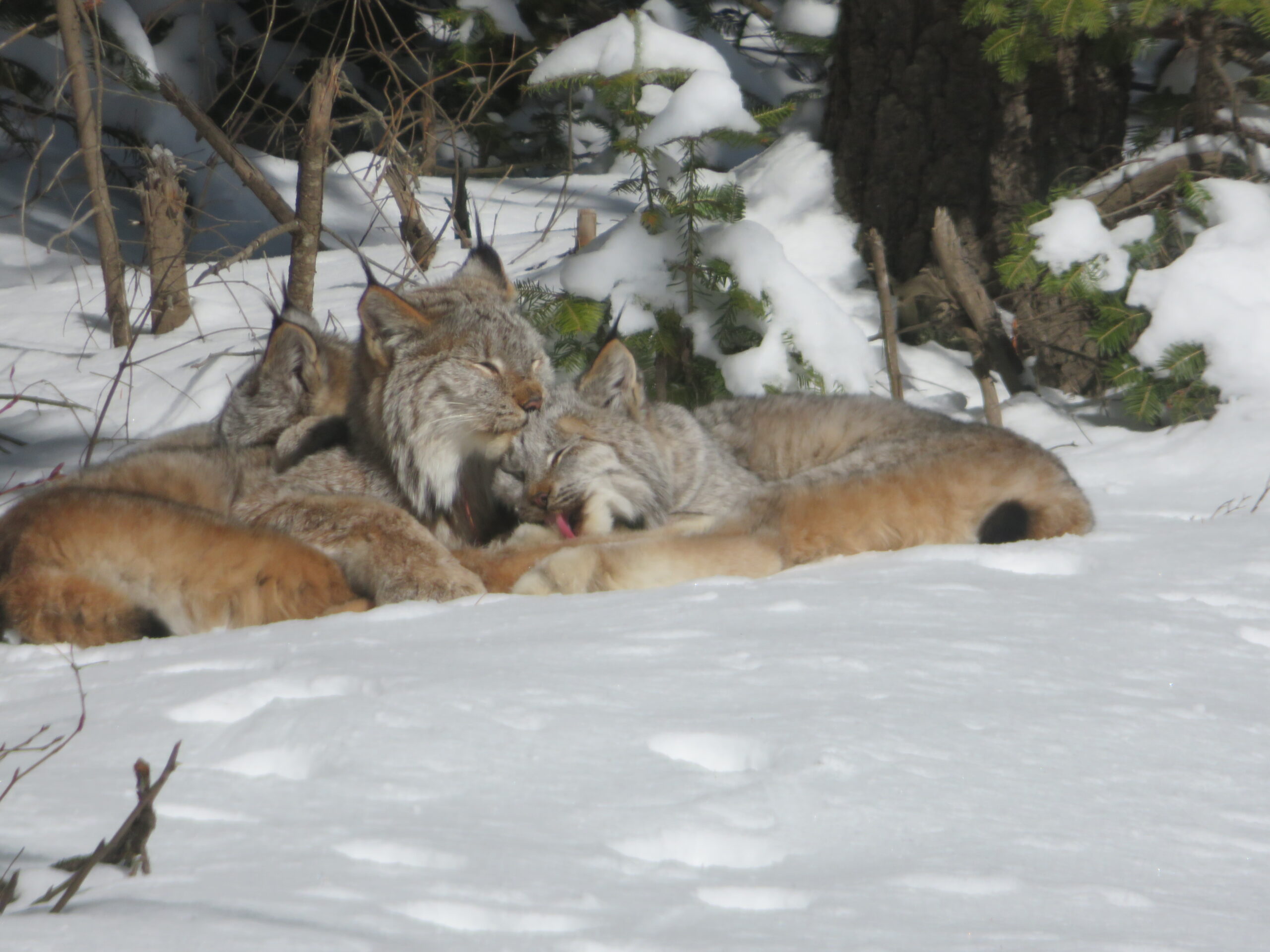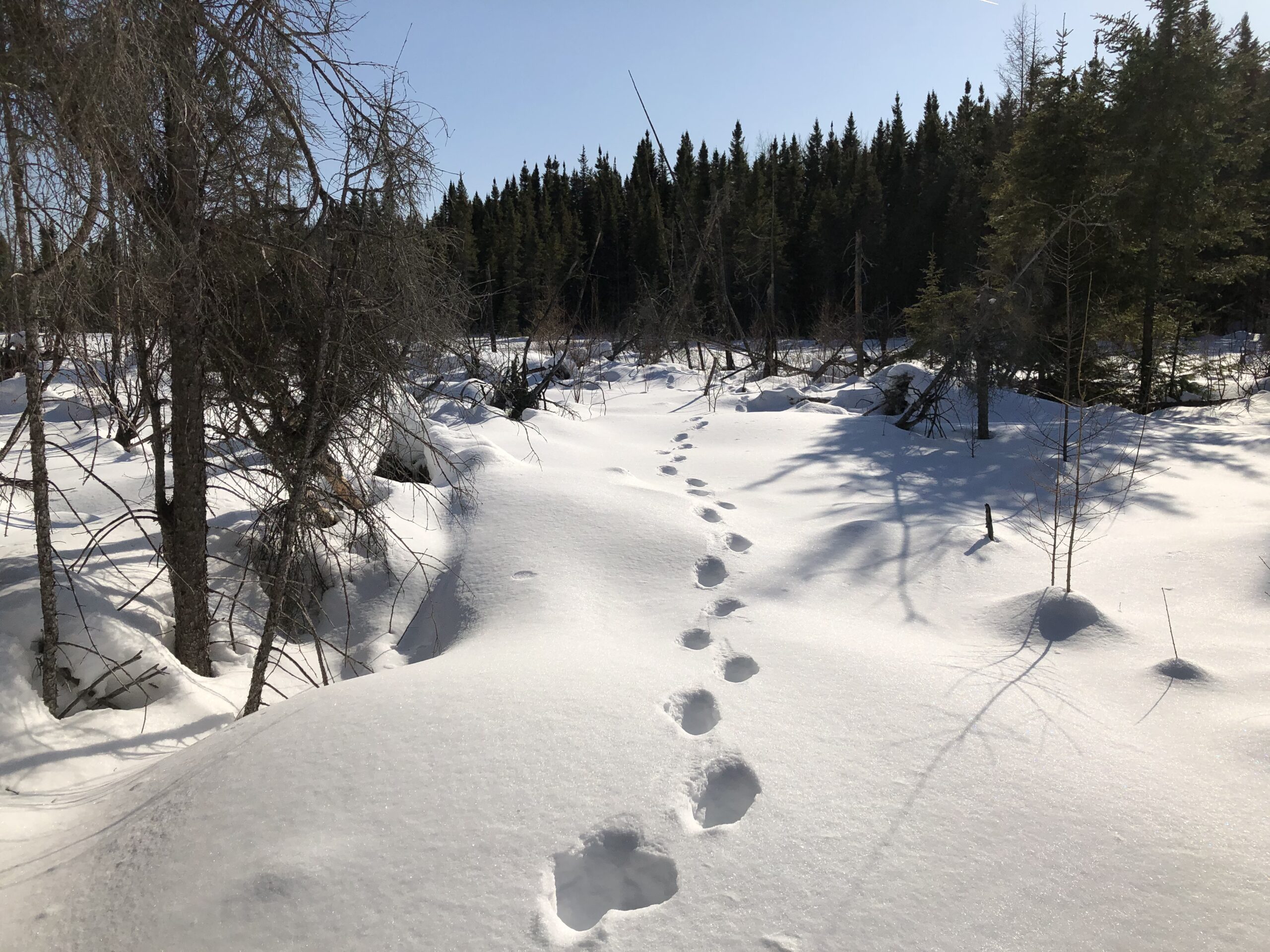
“Nibi Chronicles,” a monthly Great Lakes Now feature, is written by Staci Lola Drouillard. A Grand Portage Ojibwe direct descendant, she lives in Grand Marais on Minnesota’s North Shore of Lake Superior. Her nonfiction books “Walking the Old Road: A People’s History of Chippewa City and the Grand Marais Anishinaabe” and “Seven Aunts” were published 2019 and 2022, and the children’s story “A Family Tree” in 2024. “Nibi” is a word for water in Ojibwemowin, and these features explore the intersection of Indigenous history and culture in the modern-day Great Lakes region.
One of the most humbling realities for humans in the Northwoods, is that even in the absence of other people, you are never alone. This time of year, when there is snow in the woods and on the driveway, you get a feel for how many other relatives there are all around us. It’s common to see the straight-line trails of waagosh, or fox. Then, there’s the pointy hoof prints of white-tail deer, and even the occasional moose track. We have watched bobcats station themselves under the bird feeder during heavy snow storms, and occasionally find the round, unusually large pawprints of a wild cat floating atop a snow drift.
Even though I’ve lived in the woods for most of my life, I have never seen a lynx with my own eyes. Very few people have, and yet Minnesota still lays claim — even naming our WNBA team after the wild lynx.
In Ojibwemowin the word for lynx is bizhiw, and its furry relative the bobcat is called gidagaa-bizhiw — spotted lynx. Bizhiw is one of at least twenty-one totems in Ojibwe country, all of which were documented on paper by Ojibwe/French historian William Whipple Warren in his book “History of the Ojibway People,” first published in 1885.
The family-tree of clans branch off the original five, which are widely recognized as: Crane, Catfish (or Bullhead), Loon, Bear and Pine Marten. The role of Lynx and Marten clans are to be protectors and providers for the people. The word “totem” is sometimes used for “clan,” but that’s mostly a mainstream interpretation of the historically important and deeply meaningful relationship that Ojibwe-Anishinaabe people have to our clan relatives.
The Ojibwe word for clan is doodem, and the word “totem” may derive from “doodem,” which sounds similar when said out loud. It’s important to note that Ojibwe-Anishinaabe people are not traditionally the builders of totem poles — which are mostly associated with Indigenous tribes on the Northwest Coast of the Pacific Ocean.
Incidentally, the linguistic nature of the word “doodem” can be pluralized, like you would pluralize bizhiw to bizhiwag — indicating more than one lynx. However, doodem is not used independently without adding a prefix that tells more about whose clan we are talking about. As the Ojibwe People’s Dictionary notes: “There is no simple independent word for clan, totem.”
In order to make it a full and understandable word, you must add a prefix (and sometimes a suffix) to indicate more about clanship. For example, nindoodem, indooden, ndoodem all indicate “my clan”; gidoodem indicates “your clan”; odoodeman refers to the third person, or “her or his clan.” In conversation, one would never say “doodem” without including what human or animal relative belongs to that clan.
This inextricable clan-human relationship is built into the language, as are the close ties between humans and our animal clan relatives.
We Know Where Lynx Should Be

Group in the snow. (Photo by D. Grosshuesch courtesy of USDA Forest Service)
So, what are the implications when one’s clan animal disappears from the landscape? This could be the case with threatened or endangered species like lynx or sturgeon (another Ojbwe clan). The answer depends on our human commitment to protect our animal relatives.
The US Forest Service and the Minnesota Department of Natural Resources (DNR) in collaboration with researchers from the University of Minnesota have concerned themselves with the well-being of our lynx brothers and sisters since these vital, wild cats acquired protected status in 1984. They were later identified as “threatened” in the Endangered Species Act of 2000.
The continued presence of bizhiw in the Northwoods depends on three key factors:
- Access to contiguous hunting grounds.
- A healthy population of snowshoe hare.
- Increased awareness of the role humans play in their continued survival.
Wildlife biologist Ron Moen from the University of Minnesota confirmed that after more than 20 years of research: “we know where [lynx] should be,” which is the Boreal forests of northeastern Minnesota and southern Ontario. Moen also confirms that Minnesota is one of only a few states in the U.S. that supports a resident and reproducing population of lynx, which is estimated to be between 100 and 200 cats.

Lynx and kittens. (Photo by D. Grosshuesch courtesy of USDA Forest Service)
Canada lynx have been living alongside Ojibwe people forever. This we know. And as Moen points out, wildlife biologists have been tracking the continual presence of lynx in Minnesota since the 1930’s, including the use of radio telemetry (collars) in the early 2000’s.
More recently, wildlife biologists with the Superior National Forest have been tracking lynx by collecting their scat and analyzing it for DNA origin, health indicators and other valuable data. Last year the remains of a lynx were located at the edge of the Superior National Forest. Fur samples were sent to the Canada Lynx DNR Database which confirmed that she was “GLNR-S-571 aka “The Trappers Lake Female.”
Scat collection for this noozhe-bizhiw (female lynx) was done from 2014 to 2024, when Superior National Forest wildlife staff and volunteers collected 27 scat samples spanning an area of about 71 square miles. Through the database biologists were also able to confirm that this cat was born in the Isabella, Minnesota area in 2013 and was 11 years old at the time of her death.
The scat database also told us that her breeding territory spanned from Isabella to 12 miles northwest and 13 miles northeast. The lifespan of a healthy lynx can reach 12 years. Through DNA analysis, the agency was able to confirm with a high level of confidence that she had offspring living with her each year from 2019 to 2024, and that she likely had other litters prior to 2019 that were not detected in scat samples.
The Advantage of Deep Snow

Lynx tracks. (Photo by Ryan Pennesi courtesy of USDA Forest Service)
The welcoming of kittens every year should bode well for the future of lynx in the Boreal forest. But Ron Moen and other wildlife biologists are carefully watching the effects of warmer winters and less snow cover, as snow relates to a favorable habitat for lynx and other northern species like the snowshoe hare.
Without contiguous access to hunting grounds, lynx are forced to move into areas with roads, where cars took between 19 – 22 lynx between 2001 and 2024. This is nearly the same number taken by irresponsible trappers, during the same period of time. Trappers can be a problem because they often don’t know the difference between lynx and bobcats.
Bobcats can also be a problem for lynx, because in winters with less snow, bobcats are able to outhunt their lynx cousins. Lynx feet are specifically suited to floating on the crust of snow cover, which gives them the advantage over bobcats when the snow is deep. There are also rare instances of lynx mating with bobcats, creating a hybrid — an emergence that researchers are not actively studying, but have been watching with interest since the first evidence of a lynx-bobcat hybrid was noted in 1997.
It’s a great comfort to know that our animal teacher and protector bizhiw lives among us here in the Northwoods. If you are lucky enough to see a lynx in your part of the woods, the MN DNR would like to hear from you, as part of their effort to track and confirm lynx sightings across the region. This will help inform future research on lynx habitat, and help ensure the continued presence of these culturally and spiritually important clan relatives who have always lived in the Boreal forests of Anishinaabe Aki.
Catch more news at Great Lakes Now:
Nibi Chronicles: Manoomin as medicine
Featured image: Lynx. (Photo by Dylan Welch courtesy of USDA Forest Service)




